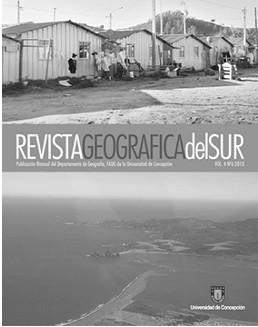Dimensiones física y cultural de la resiliencia postdesastre:
¿son compatibles en ciudades Chilenas?
Keywords:
Urban resilience, Urban landscape, Restoration, EarthquakeAbstract
The ability of a system to adapt following a major disturbance such as an earthquake, without losing its structure and characteristics, is defined as resilience. In the context of a city, the urban landscape, or the set of open spaces such as streets, squares and parks, among others, contributes to urban resilience from multiple dimensions, among which are the physical and cultural dimensions. While the first is linked to the set of open spaces that provide security and ensure the operation of the city during the post-disaster emergency period, the cultural dimension is associated with places that meet the needs of a community for restoration, expressed in restorative experiences by which a person can recover from the catastrophic effects caused by a large disturbance. A city that is able to satisfy both dimensions has greater adaptive capacity; hence, is more resilient. This was explored in two Chilean cities affected by the country’s largest earthquakes, Valdivia and Concepción. Through interviews with emergency experts and the local community, and subsequent spatial and statistical analysis, we identified useful areas for postearthquake recovery that meet both dimensions of resilience. Results reveal that both dimensions can be found in open spaces perceived as natural; moreover, in the case of Valdivia, they are also merged in places with a significant historical imprint. However, the meet of both dimensions in specific sites is scarce and their distribution in Valdivia is not homogeneous; thereby, decreasing resilience capacity. The results are relevant for urban planners and designers interested on improving the disaster recovery planning of cities.
Downloads
Published
How to Cite
Issue
Section
Copyright (c) 2025 Paula Villagra Islas, Carolina Rojas Quezada

This work is licensed under a Creative Commons Attribution 4.0 International License.







